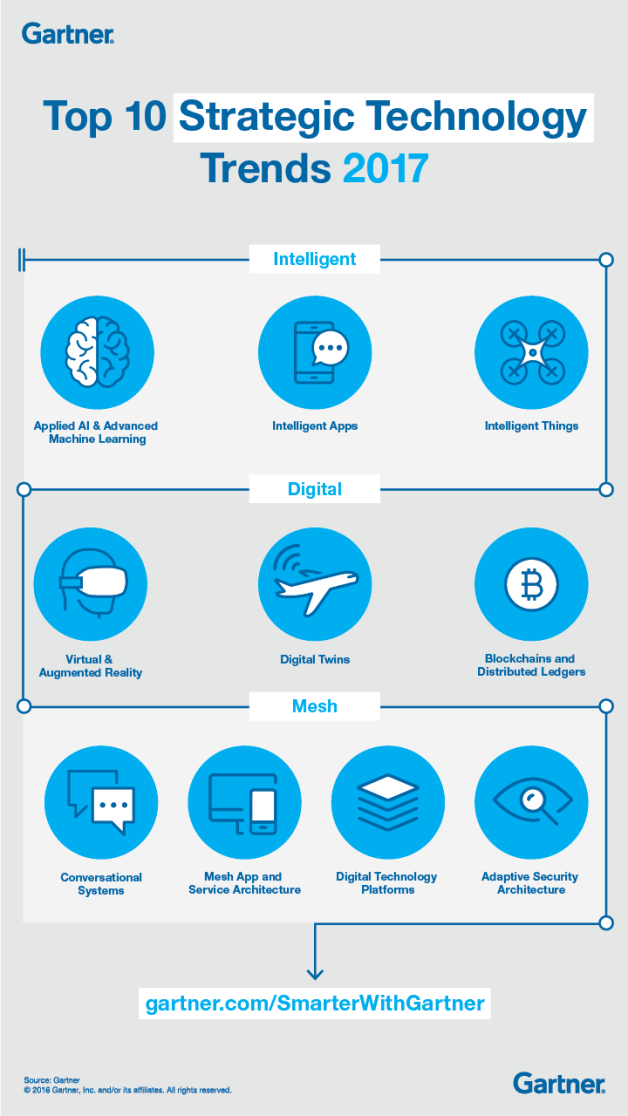
I’m establishing a new rhythm for these collections and with that have a need to try a new format with them as well. This month’s collection is a broad range, and while where I can I’ll bucket certain topics together as I have in the past, there are over 100+ articles that I’ve found interesting enough to read since my last missive and that gets a bit of a challenge from a curation standpoint. I’m also looking at creating more evergreen content for you similar to what I’ve thrown together on machine learning or artificial intelligence, but more on that another time.
First this week, please pay attention: there is an incredibly effective Gmail scam out there right now. Go read up about it, but essentially, a sender who looks like a trusted contact, sends what looks like a pdf but is actually an image that will take you to a fake google login page and from there, your identity is history. There’s a similar ruse going on with Apple IDs, but there’s less press about it.
If you’ve not heard and you have an iPhone, go update to 10.3 – it’ll save you on average 3gb of space on your phone, although it does convert to a new file format that is troublesome for a few. Oh, and Apple also acquired Workflow, which is an amazing automation app for iOS devices and they made it free – go check it out.
Ever wonder which country in the world has the happiest people? No? Well, ever wondered how the data is analyzed to determine who are the happiest people in the world? If you said yes, you’re in luck.
Middle management may seem like a thankless job, but according to HBR, it’s also an exhausting one. It has to do with the constant need to code switch as you deal with different levels of the hierarchy of an organization, and they’ve got some suggestions on how to lessen the toll from it.
Robots, robots everywhere! Not, necessarily, to the extreme that we see in Asimov’s I, Robot ( the first person to recite the three laws to me gets a prize), but they are becoming more present in our day to day lives. Heck, I even heard a story of how robots are being tested in D.C. to help “augment” the current food delivery process. I say augment in quotes because that’s what the company rep in the article said when asked if the robots would replace people. Well, one person who doesn’t seem to get how robots are going to impact our society in the near term is Steve Mnuchin. In his mind, robots won’t be displacing U.S. jobs for at least 50 to 100 years. Problem is, he’s wrong – robots have been replacing humans for a while now.
strategy+business had a good piece recently on the Ten Principles for Leading the Next Industrial Revolution. I don’t think there’s anything that would surprise you in these principles, but it does put them together in a logical order and is worth exploring. Ah, and they’ve also replaced “fail fast and often” with “innovate rapidly and openly.”
Deloitte also has an interesting exploration of how the auto industry is going to change in the near and mid-term, and how massive that transformation is going to be. With more millennials opting out of car ownership and into a sharing economy, the automation of delivery vehicles that we’ll see culminate in the next five to ten years, and the looming death of a generation who have driven car sales most of their lifetime, the auto industry is on a precipice and they’ve done a good job of analyzing and detailing all the possible outcomes. While many of us aren’t tied directly to the automotive industry, this in addition to the previous piece on the next industrial revolution should get you thinking differently about your own challenges. By the way, one trend that you’ll find between them has to do with data. Oh, and stratechery wrote on the same topic with greater brevity and a very different approach, but the same outcome – car ownership is going to change. It already is.
Speaking of data, here’s something about how big data is helping find the Achilles heel of each individual cancer.
Well, there’s been a little bit of news this last week about how individual privacy on the internet is being betrayed by “235 stooges in Washington” to quote one news source, and while I think we’ve been giving up more and more of our privacy for a long time, if you are concerned about yours, check out this article from Kevin Mitnick on how to go invisible online. By the way, at a minimum, you should be using a virtual private network (VPN) on your personal devices to keep your personal data from being stolen as you enjoy a coffee at your local Starbucks. And yes, I know I’ve said this before. Also, there’s this article from the Pew Research Center on what the public know about cybersecurity. They even have an interactive quiz. Also, take a look at what the future of passwords may hold.
Speaking of stolen identity, check out this story on a $30k sting operation one person pulled when hackers stole her website.
Time for a quick video break: this week Fast Company has an interesting (and short) one on how circular runways could lead to more efficient airports.
We’re in the midst of Spring Break season, and with that, Legoland Florida has launched an educational, road-trip friendly app for kids. It seems pretty cool and is a good indicator of where how we’ll continue to see content and experiences evolve.
Tech will lead to new sub-prime crunch. That’s a bold headline, even without the missing preposition, and TechCrunch makes the case that while in the past P2P lending rates in the subprime arena have been indicators of coming economic contraction (note: the overheated economy and tightening labor pools is a more classic indicator), the gist is that more people are going to be pushed into a lower wage earner bucket with a continuing stagnation of salaries (which have been stagnant since the 80s compared to economic growth and corporate profits – just ask a real economist), and that will push the sub-prime market to continue to grow and with that growth, eventually blow up.
OK, so, I’ve written about AI before on many occasions, and with good reason as it is a topic that is getting a lot of press these days. I took the time to try and explain the differences between narrow and general AI, and as well to keep us all up with how it is intersecting with machine learning. What this article points out, however, is that that interest in AI and machine learning has created so much different data sets itself that it has started to skew the data and what is “real” about … data, much less the preponderance of actual fake news that is out there. To quote ”this pairing of interest with ignorance has created a perfect storm for a misinformation epidemic. The outsize demand for stories about AI has created a tremendous opportunity for impostors to capture some piece of this market.” Oh, and then there’s the latest about how AI will change everything … again.
Also speaking of data, here’s an interesting article about how Charity: Water is using it to connect donors to the people they are helping.
A fun article (maybe) that relates to the world of AI and algorithms: When Machines Go Rogue. To wit, complex systems have lots of parts, and that means there are lots of ways they can fail. Also note, however, that there are lots of redundancies for that reason.
Google has been in the news little of late, from a big headline standpoint, but one interesting read is their approach to creating the next Silicon Valley. Oh, and then there was the demise of Google Fiber.
In case you’re interested, here’s a look at Goldman Sachs’ Annual Report. It’s a treasure trove, as most annual reports are, at the direction the company is going … especially when you read between the lines. While on the topic of Goldman, take a read as to why the firm is going on a buying binge for delinquent mortgages … again (2008 sound familiar?).
I’ve written a lot about how we need to change how we are recruiting and hiring women. Here’s an article about the need to change our strategy around this, and for obvious reasons – we’ve seen a desire by millennials to change how we work, and how we work is, in fact, changing. Let’s not hold women to a standard and antiquated version of the workplace when we’re willing to accommodate others.
Take a moment, if you will, and go look at Business Insider’s list of the most powerful female engineers in 2017 and what they are working on.
Thank the Boston Globe for this one: the biggest threat facing middle-aged men isn’t smoking or obesity … its loneliness. I know it’s a little off-topic, but given the audience of these missives, I thought it relevant.
There’s been a lot of news lately about the new Amazon play into the grocery business, and how they plan to make it so that we not only ever have to wait in lines, but we never even have to talk to another person! (Now do you see my reference to loneliness above?). Well, the ‘zon is trying to break into that $800 billion market with a splash, what with their foray into physical stores after online has failed in that domain for them. Read about the genesis of that journey here. And speaking of Amazon, check out why ad agencies are so afraid of what Bezos might be planning next given the 60% jump in revenue from advertising last quarter.
So why are employees at Apple and Google more productive? Is it the swanky digs? The free lunches? The compensation packages? Nope, it’s what they do with their star performers and their internal development programs. Note: companies that lack development programs will always play in the minor leagues. Along with that is this article about why the best employees quit, even when they love their job.
I just like the title of this article (because it’s true): iteration is not design. The point, really, is that while iteration is a great design tool, it doesn’t create great design because it can’t innovate, solve usability problems, or create delight.
SXSW has come and gone for another year, and as always there was a flurry of “new” and “hot” technology this year mixed in with weird films and lots of bands. According to Forbes, AI dominated the SXSW conversation this year; while CNET has a good round-up of everything that happened and WIRED claims that tech is finally trying to clean up the mess it made.
Uber has been in the news of late, and while I’m sure a lot of you have already seen many articles about all that has passed, there are a few I think are important because of what they mean for the future of the company: did Uber steal their driverless car tech from Google? (If they did, there’s a company big enough to take them down). Doubtful? Check out this timeline. Then there’s this piece from Pando about the economic evidence that shows that Uber isn’t as innovative as we all claim it is. And Newsweek had something to say on the matter as well and The Verge asks if Uber can be saved from itself. And while The Guardian states that every time we take an Uber we’re spreading its social poison, one of the most interesting tidbits to come out in my mind is that Uber has been using a fake app to get around legal blocks in certain markets. You know what really annoys me, though? The lack of the umlaut. Seriously, is it that hard to have a stinking umlaut in your brand?
Seriously, not to make light of all the news that has come out, it’s clear that Silicon Valley has a “bro” problem, and Über epitomizes it, even with their recently released diversity report and bringing Arianna Huffington in to clean up their image. That’s going to be tough given all that has passed. This goes back to the fundamental question, mind you, of why is Silicon Valley is so awful to women.
This article does a good job of exploring why sexism/harassment/discrimination is such a rampant issue in Silicon Valley.
There’s a new project at Google where they are using facial recognition software to measure gender equality in films.
Would you spend $25bn to acquire 100m new customers? Well, Mukesh Ambani did, with the goal of transforming the telecom market in India. And transform it he did.
So, Warren Buffet sold basically his entire stake in Wal-Mart recently, and we’re seeing a continued downward spiral with brick and mortar retail stores as more and more shopping is done online. So what’s next for the American Mall? Oh, and if that trend continues, there will be a collapse of commercial real estate in the next few years.
Viacom may be onto something in the VR space with its new VR experience, The Melody of Dust.
There’s a really interesting conversation with Chris Anderson on how and why we should close the loop on all the new and old systems that are out there and how ongoing innovation is making that possible. It’s worth a read.
Last time around I spent some time talking about Moore’s Law and Quantum Computing (note to self: that may be a good future deep dive), but this time around there’s an article from Quartz about how two small changes may make your phone battery last forever, even if Moore’s Law won’t. Or, better put, how the desire to have longer lasting devices that don’t catch on fire may finally force manufacturers to think differently about design.
Another interesting piece of telecom news came out recently: NYC is suing Verizon for failing to provide fiber broadband to all its households.
We all spend so much time in meetings, and while we can’t control how others run their meetings, we can certainly control how we run ours. HBR has a great article on that point, and, in fact, it was refreshing to see their take as it reinforces how annoyed I get when I go to a meeting without a set agenda and clear purpose.
Let me follow that up with two articles from HBR on something completely different: blockchains, how safe they are, and how they’ll move beyond finance. Along with that is this piece from the NY Times about how blockchain is a better way to track everything from pork chops to peanut butter.
Seeking Alpha did some analysis lately on Seagate and why the hardware provider will continue to face end market challenges. I read it as “without innovation, Seagate will decline.”
It looks like the worlds of voice recognition, AI, and Alexa is being taken on by a small outfit in Japan, whose IM Line is working on a virtual assistant to topple Amazon and its market dominance.
Oh, and remember that little glitch a few weeks back with the internet because of an errant keystroke in an AWS data center?
Elon Musk has started investing (as have others) in how we turn people into cyborgs. No, really. The flip side of that is using humans to teach AI to “perform” smarter.
Something else AI might lead to? The useless class.
I’ll tell you, there’s a lot of doom and gloom out there, like this old topic made new again: medical devices are the next security nightmare. I say old because I’m pretty sure I talked about this around this time last year.
Snap recently had their IPO, and was it a day. This piece from the New Yorker highlights the trouble with all the SV IPO optimism.
McKinsey has a really great study that’s just come out that is all about connecting talent with opportunity in the digital age. It’s a good read, especially with some people predicting that Big Data will make human recruiters obsolescent as early as next year … which I think is a stretch.
Almost last this week is this article on LinkedIn that captures twelve lessons on leadership from the Navy SEALs. Most salient: there is no such thing as a bad team, just bad leaders.
So last I’ll leave you with two TED talks: the first, Dan Bell taking us through the inside of America’s dead shopping malls and the second with Joy Buolamwini on how she is fighting bias in algorithms.











